The town of
Navsari, near Surat in Gujarat,
is the ancestral home of many eminent Parsi families (of which several were prominent in the China trade).
The First Dastoor Meherjirana Library
was founded and endowed by a prominent mercantile family
and it has been sustained for over one hundred forty years by other Parsi families from Navsari.
The library’s brochure explains: ‘in 1872, a wealthy Mumbai Parsi, named Navsariwala Seth Burjor Bamanji Padam,
commissioned a building to be erected on his own land, known as Lakkad Falia, and,
with a fund of Rs 225, the First Dastoor Meherji Rana Library was born’.
The library is named after a figure of great significance in Parsi history – a Zoroastrian savant by the name of Meherji Rana: ‘According to a Persian biography in the library’s possession… Meherji Rana was chosen by the Mughal governor at Surat to have an audience with the Emperor Akbar to explain the Zoroastrian religion. During his stay at the court from 1578-9 AD, Meherji Rana impressed the emperor so much that according to the Mughal court historian ‘Abd al-Qâdir al-Badâ’ûnî, the empreror ordered his vizier Abu’l-Fazl to keep a fire burning day and night at the court… Meherji Rana’s presence in Akbar’s court was a great historic incident for not only the Parsis for Navsari, but for the whole Parsi community. Appreciating this, when he returned to Navsari, all the priests accepted him as the head of the Navsari priests, and for the first time the title of high priest (vadâ dastur) was bestowed. Therefore, he became famous as the First Dastoor Meherji Rana, beginning a priestly lineage which continues to the present day.’
Today one of the Library’s most treasured possessions is the Mughal firman that granted land to Meherji Rana. It was issued under the seal of the Emperor Akbar and was signed by Abu’l Fazl, the great Mughal chronicler, in his own hand.
The Library has an extensive collection of manuscripts
in Avestan, Pahlavi, Farsi and
Old Gujarati and
Sanskrit
many of which were found in this Godrej safe (built of course, by a Parsi family).
The Library also has a small museum with a collection of finely-worked gara textiles.
Their Chinese inspiration is evident in their motifs and designs.
During my brief visit to Navsari I had the good fortune to see a performance by a Parsi theatre company, based in Surat.
The company is headed by Yazdi Karanjia
and it is a family enterprise involving three generations of Karanjias.
It was as if I’d been granted a glimpse of theatrical history: for the Parsi theatre has had a huge impact across Asia – the origins of Bombay cinema have been traced back to it for example. Its influence extended far beyond the Indian subcontinent however: in the 19th and early 20th century Parsi theatre troupes traveled widely in Southeast Asia and such was their popularity that they inspired a genre of performance that came to be known as Wayang Parsi.
In his study of this form Jan van der Putten writes:
‘Parsi theatrical companies on tour through Southeast Asia met with great success in the [Straits] settlements through its combined appeal for both a relatively large and established Jawi Peranakan community, and more recent migrant groups from South Asia, such as Tamil indentured labourers. Prominent members of the Jawi Peranakan community also invited groups from South Asia…. Localized theatrical troups were formed as nodes in that network, where South Asian, Chinese, and Javanese influences converged into new forms such as Komedie Stamboel, Mendu, Dul Muluk, and Bangsawan. The last of these, which was most popular in the Malay Peninsula, seems to be the most closely related to the Parsi theatre, which triggered the foundation of ‘imitation Parsi theatre groups’ (tiruan wayang Parsi) in the last two decades of the nineteenth century… It is reported that in the mid-1880s, Mamat Pushi, a Parsi businessman in Penang, formed the first local Wayang Parsi troupe, which he named Pushi Indera Bangsawan of Penang, also known as the Royal Malay Opera/Komidi Melayu, and most grandiloquently, The Empress Victoria Jawi Peranakan Theatrical Company, Penang. From the very start this group was a big hit, and stimulated the formation of two other groups around the same time: Sri Indramawan, also known as The Prince of Wales Theatrical Company and Sri Mudawan.’[i]
Navsari has many fine buildings consecrated to Zoroastrianism.
A large seminary attached to a small fire temple;
the complex is known as the Vadi Dar-e-Meher.
Priests of the rank of Navar and Martab are trained here.
And the town also has an exceptionally handsome Atash Behram (fire temple).
Vada Dasturji Firoze M. Kotwal
is currently the seniormost Zoroastrian priest in India.
One of the most interesting aspects of Navsari’s history is its connection with the China trade. Many of Navsari’s Parsi families were deeply involved in this trade and two of the subcontinent’s foremost China traders were born in this town – Sir Jamsetjee Jejeebhoy and Sir Jamshedjee Tata. They were born in the same neighbourhood, in very similar houses, both of which are now maintained as museums by family trusts.
This is the birthplace of Sir Jamsetjee Jejeebhoy (1783-1859),
who, from these modest beginnings,
would go on to become one of the world’s richest men.
This is said to be his father’s loom.
The house is built in a style that is simple yet elegant as well as utilitarian.
The rooms branch off from a corridor that runs down the length of the house. This is the room where the future magnate was born.
This is the kitchen
and the cistern, where water was stored.
Above the rooms, tucked beneath the pitched roof, is a loft,
that spans the length of the house.
It is now presided over
by a statue of Sir Jamsetjee.
The birthplace of Jamshedji Nasserwanji Tata (1839-1904),
founder of the Tata industrial house,
is only a few hundred yards away.
The layout of the interior is much the same as that of the Jejeebhoy house.
There is a similar corridor,
with bedrooms branching off it,
and a ladder leading to a loft above.
And an outhouse in the courtyard beyond.
I don’t know if any research has been done on this, but to my eye, these houses appear to have more in common with the ‘shophouses’ of Southeast Asia and Guangdong than with the urban dwellings of the interior of the Indian subcontinent. Should this be true, it would provide yet more reason to believe that in many respects the coastal regions of the Indian Ocean have more in common with each other than with their hinterlands.
Small wonder that enterprising young men born under these roofs would go eastwards to seek their fortunes!
Sadly I was unable to determine the exact location of Bahram Modi’s birthplace. But I think this may have been it.
_______________________________
[i] Putten, Jan van der: Wayang Parsi, Bangsawan and Printing: Commercial Exchange between South Asia and the Malay World, in Feener, Michael R. & Terenjit Sevea (ed.): Islamic Connections: Muslim Societies in South and Southeast Asia, Instt. Of Southeast Asian Studies, Singapore, 2009; pp. 90-1. I am grateful to Michael Feener for bringing this article to my attention.

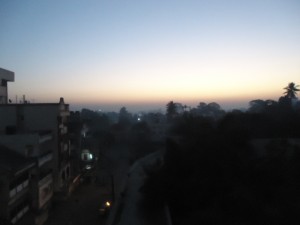

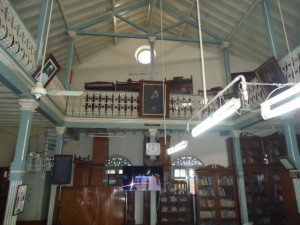
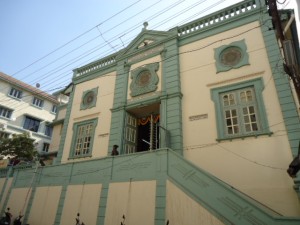
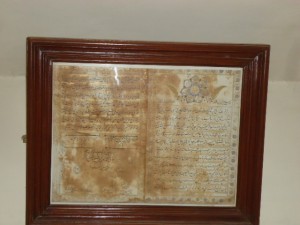


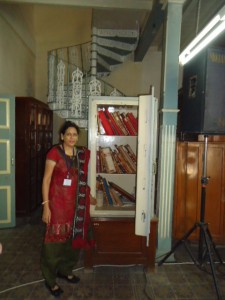
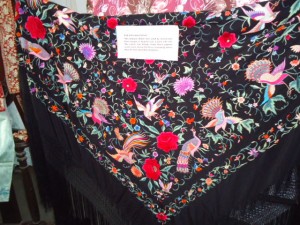

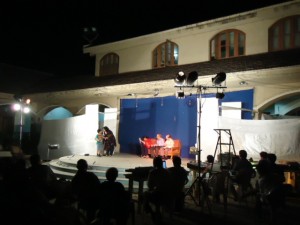
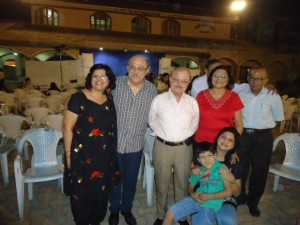
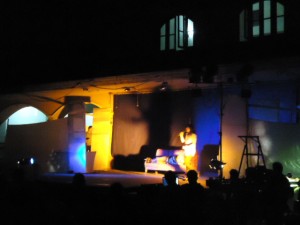


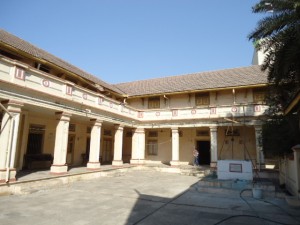
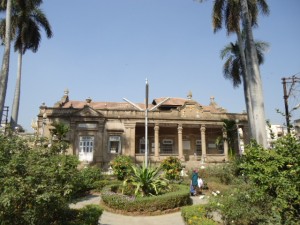

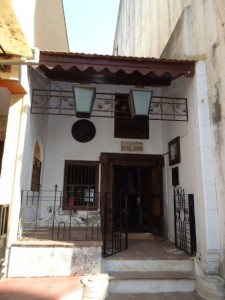


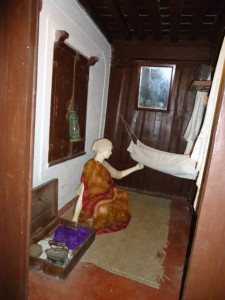

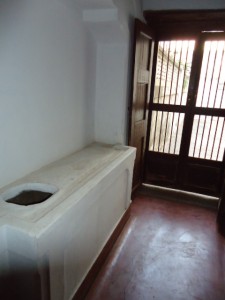
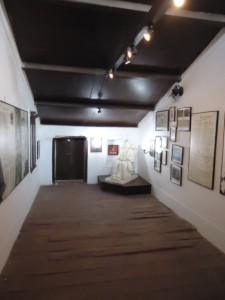
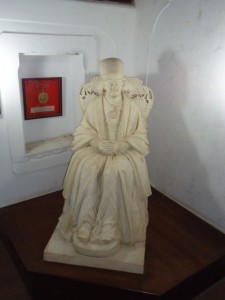
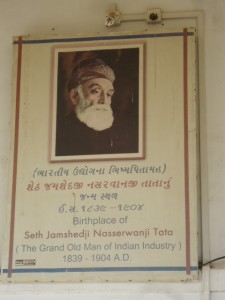
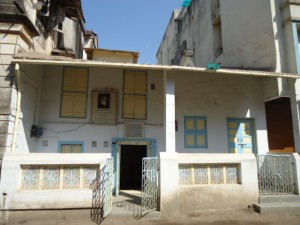
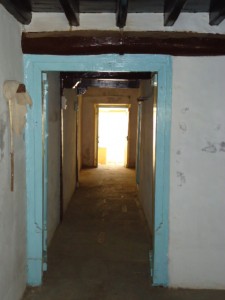

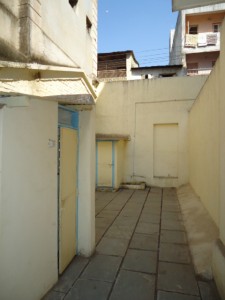

Thank you for sharing a slice of Parsi heritage …
As I was reading this I was reminded of the chettinadu houses in Tamil Nadu. Though the scale and grandeur is completely different, the concept of rooms branching off a corridor that runs through the length of house seems to be common(which again is not common in south India – hinterland?). Would there be links, given that they too were a trading community? just wondering….
thank you… you have taken real trouble to bring this to us parsis….we are grateful to you………..keep up the good work……….armin
Amitav, thanks so very much for this blog!! It brought back many happy memories of summer vacations spent in Navsari at my grand parents’ house in Pinjar Mohla. I also remember many a trip with my grandfather via the small private buses (during the 50s) from the Police Thana to the Atesh Behram and then to the library where my grandfather would read the previous day’s edition of the Times of India and then back home in time for lunch. But the high point of the trip always was the quick stop at Kolha’s shop where the passengers could avail themselves of scoop or two of ice-cream served in a glass ice-cream cup and those special ice-cream spoons. The bus would wait until all of us had finished the ice-cream and the cups had been returned!!! I did not know about the birthplaces of J N Tata and J Jejeebhoy — I will make it a point to visit them if I manage to get to Navsari again, Thanks again!! Please write more!! Jehangir
Thanks so much!
Amitav
Excellent News
Thank you so much for this useful blog. & the precious photos. I had my free aducation in Sir J.J.primary school & for that I am very grateful.Thanks ones again.
Excellent and extremely informative. Thanks a million God Bless – Khushroo
Thanks for this most interesting article. My husband’s family came to Mumbai from Navsari in the mid 1800’s and even thoough we have no family history of Navsari we do know thatr we belonged to the Daboo family who were very prominent in Navsari.
Very nice article. I have never been to Navsari. But I know Rusi Jeejeebhoy we went to Wadia College in Poona. We were good friends once. He has a great family history and is a great person.
We in US sometime like to hear nice things about Parsi folks in India. Thanks for enlightening our day with this article.
Very interesting. Nicely put together.
Dear Amitav, thank you. It is people like you and other non-parsis who are more interested and want to keep us parsis/zorastrians in the front and center.
Our very own BPP has another agenda to shame us and run us in the ground. May your tribe increase! With renewed appreciation.
Vada dastur of Navsari is K.N. Dastur & not Firoze Kotwal
That is what I was told, but I will check again. Thanks.
A
A clarification in response to Homi Dalal:
Amitav has not said on the blog that Dasturji Kotwal is the Vada Dastur of Navsari, he has said that he is the senior-most priest in India, which he indeed is.
TRULY SAYS THE SONG…. “VEERA VEERA PARSI O AYE KARIYA BHALAI NA KAAM….”
THAT’S WHY TODAY WE ENJOY THIS NAME, FAME, THIS ANJAAM
LET’S RAISE A TOAST TO THESE GREAT MEN OF NAVSARI-GAAM
ARMIN DUTIA MOTASHAW
Thanks for this interesting piece of history.
I wish someone had taken you to visit the bungalow of Sir Ratan Tata who was the son of Jamshedji Tata. It is a very elegant house set amid sprawling grounds and has a lovely garden and several peacocks.
Amitav,
Navsari was not as Dharam ni Tekri where many philanthropists were born. Sir Cowasji jehangir, Cowasji Dinshaw, Dadabhoy Nowroji Dordi, Sorabji Garda, Shapurji Jokhi, etc. to name a few had done memorable deeds for Navsari. Late Dastoorji Kekobad Meherjina commanded such respect not only from Zoroastrian community but Hindus, Muslims communities also respected him and whenever Dasturji Kekobad presided in any function he was given respect by standing as mark of respect. Any function attended by him would start with 2 yatha and 1 ashem. Today it is rare to find such religious scholar in our community. Navsari was proud to have such religious leader.
My grandfather, dad, my uncle, my brothers and cousins, my husband and his brothers were all ordained priests in Navsari. It was customary for the generations to carve their names in the stone pillars of the courtyard (defacing did not come to mind at all !) when they sat for their nahn before they became navar/martab. Our children had a great time trying to find the names of their great grandfather, grandfather, father, uncles etc. on one such visit to Navsari
Thanks a ton Amitav. Really interesting. On my next visit to Udwada, plan to visit the navsari atash behram first and then the Meherji Rana library, of which I have heard and read a lot. Your article has truly kindled my interest to visit this library, which, all of us Parsis, should be proud of. Warm regards – Mahrukh Dadabhoy
Thanks!
Great article. Very interesting.
Two things I wish to add:
Dadabhoy Navroji was from Navsari. His full name was Dadabhoy Navroji Dordi.
India’s culinary tradition is enriched by Parsi Achar (condiments) thanks to the Kolah family of Navsari.
Lovely post. This brings back memories of childhood trips to Navsari to visit my maternal grandparents who lived on Tumboli street.
When you mention the town NAVSARI, you just corelate it with Dinshaw Kaiki Tamboly, who has done so much for the Parsees of not only Navsari,but for the whole of Gujarat.
superbly informative about our very own Navsari thank you so much dear Amitav i have read both your books and wonder at such extensive research about our birthplace where our Mehta family has established the first Parsee Lying In Hospital popularly known as Suvaverkhanu in 1915 Today it is a 125 bed cosmopolitan hospital Hope we could meet Be my guest
Thank you very much for your kind words.It would be a pleasure to meet you – I hope it will happen some day.
best wishes
Amitav
Really superb work.
Actually i am an architecture student, lived in navsari. I am doing one project related to parsi community only.
This information will help me on first stage of project.
If you have any other good information i would like to see that also.
Thank you.
Khyati.
Dear Amitav…..fine collection and facts to portray Navsari, truly a heritage town for the Parsi community with its many intact Parsi mohallas and institutions. through this comment i would like those visiting your blog to know that i have been very fortunate as a conservation architect in being part of restoring the birthplace of all the three stalwarts…..Sir Jamshetji Jeejeebhoy, Sir Jamshetji Tata and Dadabhai Naoroji. The Sir J N Tata birthplace at Dasturwad was restored with a very modest exhibition very recently with the initiative of Tata Services Ltd…..the Sir JJ birthplace as showcased in your blog by Sir JJ charity fund is at Vatcha Mohalla….very close to Jamshed Baug Panch Hathdi….on th other hand the Dadabhai naoroji birthplace is under restoration, courtesy Dara Deboo and family….a street prior and very close to the Atashbehgram ….historian Homi Dhalla and Mrs Homai Modi have been a integral part to the development of the latter two proposals….request all to visit these living institutions to take inspiration from!
thanks very much for writing Jamshid!
Amitav
dear j. bhiwandiwalla, read your comment. Please how did the name ‘vatcha mohalla’ came to be in NAVSARI. I am from Vatcha and Chanduwadia’s side. the surname VACCHHA is mentioned in prayers of deceased remembrance. Is it Meherji-Rana or Chanjibhoy. I had seen it on google. Never knew anybody who had visited Navsari. from my family side.I may be wrong. Tehemton F. VATCHA
Very Thankful to You for recognizing this Great birth places of these Great Mans. These Parsi Mans have made the whole community proud & had put our country India on the face of this earth to be recognized by all around the world. I’m blessed to be born in this town & lucky enough to be born as a “Zoroastrian” . Thank You so much for posting this on Your blog.
Hey Amitav,
Thank you for this awesome post on Navsari . I grew up in Navsari . Having been abroad for more then a decade and travelled many countries and cities, Navsari is still close to heart – it is still home . I grew up next to the Jamshedji tata house in dasturwad. The pictures you posted brought back memories ofy childhood .
Thank you and congratulations on putting up a great post on Navsari highlighting us Parsis.
HI Amitav,
It was a pleasure to go through this article.
Navsari was also a shelter or stepping stone for Shivaji to attack Surat and there are areas like Dudhiya Talav and a secret passage around Kabilpore which can give a deep insight from Archeological point of view.
Long before the Parsis arrived two lost tribes of Israel also creted a settlement there.According to legends Lord Rama created Anavils out of Bhils as there was a shortage of the Brahmins for a yagna. However the Anavis have facial features that resembe mid east charactaristics and it is possible that one of the lost tribe ended up as Anavils.Anyway this has no relevance to today and Parsis have definately enriched the culture of South Gujarat.For some reason just like the milk and the sugar incident South Gujratis have contributed to the freedom fight in many countries of the world.The spirit of fairness and the ability to stand up to injustice amongst the people of the South Gujarat gave INdia the independence.
I will end this with one sad note. Mahadev Desai was taken away from us in his prive Mahatma Gandhi’s adopted son.India would have never split had Mahadev been on the side of Bapu in 1947.
Looking forward to the future I can gladly say that a number of entrepuners from South Gujarat are making their mark on the future history of the world.
Regards and God Bless
Viren Naik
If there is one inaccuracy, it is Amitava’s description of Dastur Feroze M. Kotwal as India’s “seniormost” dastur. There is no such person, whether by any community process of selection nor by any other measure. Dastur Kotwal is a highly respected, highly learned and highly acclaimed priest but he is not more senior than the others. Indeed, the Parsis do not have any “high” priests either, even though some members of the community have chosen, of their own volution, to identify a few as such.